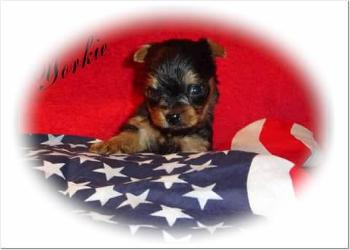

Cheerful and spunky, this tiniest terrier is a great companion for owners who enjoy a curious, busy dog. Yorkshire Terriers get along great with kids too, though caution should be taken to make sure that play doesn’t get too rough for these little dogs. The Yorkshire Terrier is also very portable and loves to travel – whether it’s in a bike basket, backpack or designer purse.
Typically, the Yorkie likes to be the boss. If you’re bringing a Yorkshire Terrier into a multi-dog household, be aware of the pack dynamic and keep an eye out to make sure your little Yorkie doesn’t make the mistake of trying to dominate your Rottweiler.
Yorkshire Terriers are born with black and tan coats, but as they age the black changes to a silvery blue that can be quite eye-catching. If you’re maintaining their shiny coat for show purposes, be prepared to oil the hair and wrap it on a regular basis. Otherwise, the occasional wash and regular brushing will do. Typically, puppies younger than 4 months have the hair on their ears clipped to encourage the ears to stand up. Once the ears are up the hair falls long with the rest of the coat.
For obedience training, the Yorkshire Terrier is very trainable and tends to do well. They enjoy obedience trials and love to learn, especially when there are treat rewards involved. That said, owners shouldn’t let their Yorkie have the run of the house and should, from a young age, be prepared to deliver firm, but fair discipline.
Traditionally, the Yorkshire was bred as a ratting dog, used to hunt out vermin in tiny places. As their name suggests, this breed originally developed in Yorkshire in northern England in the mid-nineteenth century.
Characteristics:

